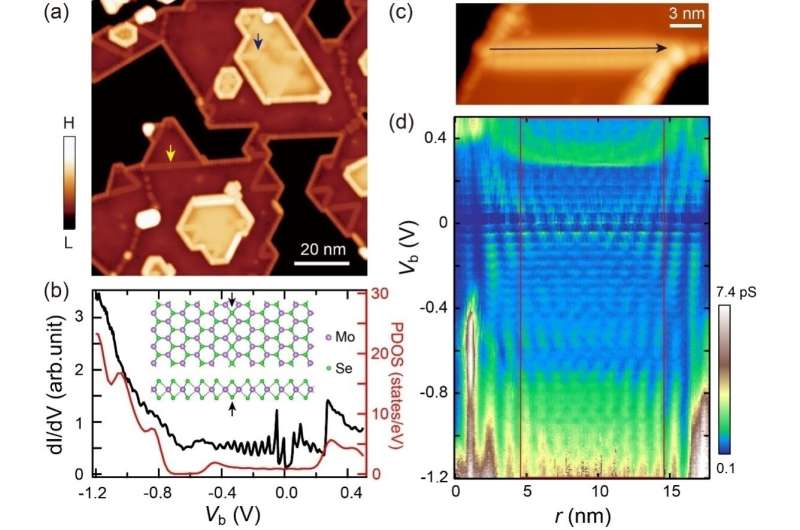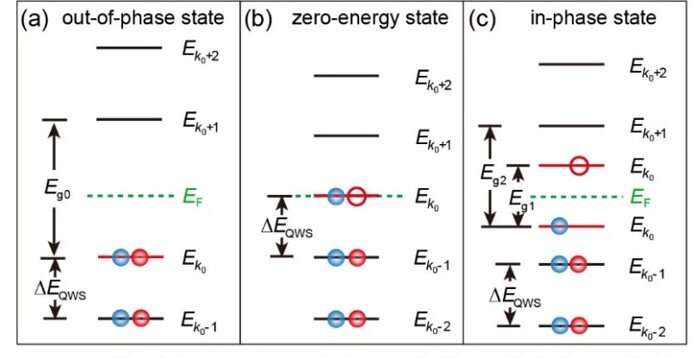
In a study of one-dimensional electron correlation states at the MTB of monolayer and bilayer MoSe2, a research team found that two types of correlated insulating states driven by a dubbed Hubbard-type Coulomb blockade effect could be switched by tip pulses.
By means of molecular beam epitaxy, this team has grown single-layer and double-layer MoSe2 films with one-dimensional MTB on graphene substrates. It is found by scanning tunneling microscopy that the one-dimensional MTB has metallic states. Due to its limited length, the one-dimensional states are subject to quantum confinement effect, resulting in quantized discrete energy levels.
They found two types of MTBs with different ground states, defined as in-phase and out-of-phase states respectively, according to the spatially modulated phase of the two discrete levels spanning the Fermi surface. More interestingly, by applying tip pulses, it is possible to reversibly switch the two states.
They showed that the Coulomb energies, determined by the wire length, drive the MTB into two types of ground states with distinct respective charge orders. The quantum well states at the Fermi surface are affected by the Coulomb effect.
When the Fermi surface is between two quantum-well states with different wave vectors, that is, the out-of-phase state, the energy level interval increases and becomes the sum of Coulomb energy and the interval of the quantum well states.

When a quantum well is exactly at the Fermi surface, that is, the in-phase state, the energy level is spin–split by Coulomb energy to form a single electron occupation, and the splitting size is the Coulomb energy.
The electron filling of MTB is tuned with the tip pulse, where the additional injected charges, as substantiated by first-principle calculations, are stabilized via a polaronic process, rendering it feasible to controllably adjust its number of electrons and its spin state.
The determined Coulomb energies are found to solely depend on the wire length, irrespective of the distance of the MTB to the graphene substrate, demonstrating the Coulomb interaction is short-range. This is different from the classical Coulomb blockade effect, where the Coulomb energy depends on its capacitance to the environment and is thus long range.
Such short-range Coulomb energy has a similar expression to the classical Coulomb blockade effect, and is thus dubbed Hubbard-type Coulomb blockade effect.

This research team achieved control of electron correlation and spin states at the atomic scale, laying a foundation for understanding and tailoring correlated physics in complex systems.
The research was published in National Science Review.
Explore further
The observation of 1D Coulomb drag between adjacent QSH edges separated by an air gap
Xing Yang et al, Manipulating Hubbard-type Coulomb blockade effect of metallic wires embedded in an insulator, National Science Review (2022). DOI: 10.1093/nsr/nwac210
Citation:
A Hubbard-type Coulomb blockade effect discovered in the mirror twin boundary of MoSe₂ (2022, October 28)
retrieved 28 October 2022
from https://phys.org/news/2022-10-hubbard-type-coulomb-blockade-effect-mirror.html
This document is subject to copyright. Apart from any fair dealing for the purpose of private study or research, no
part may be reproduced without the written permission. The content is provided for information purposes only.



